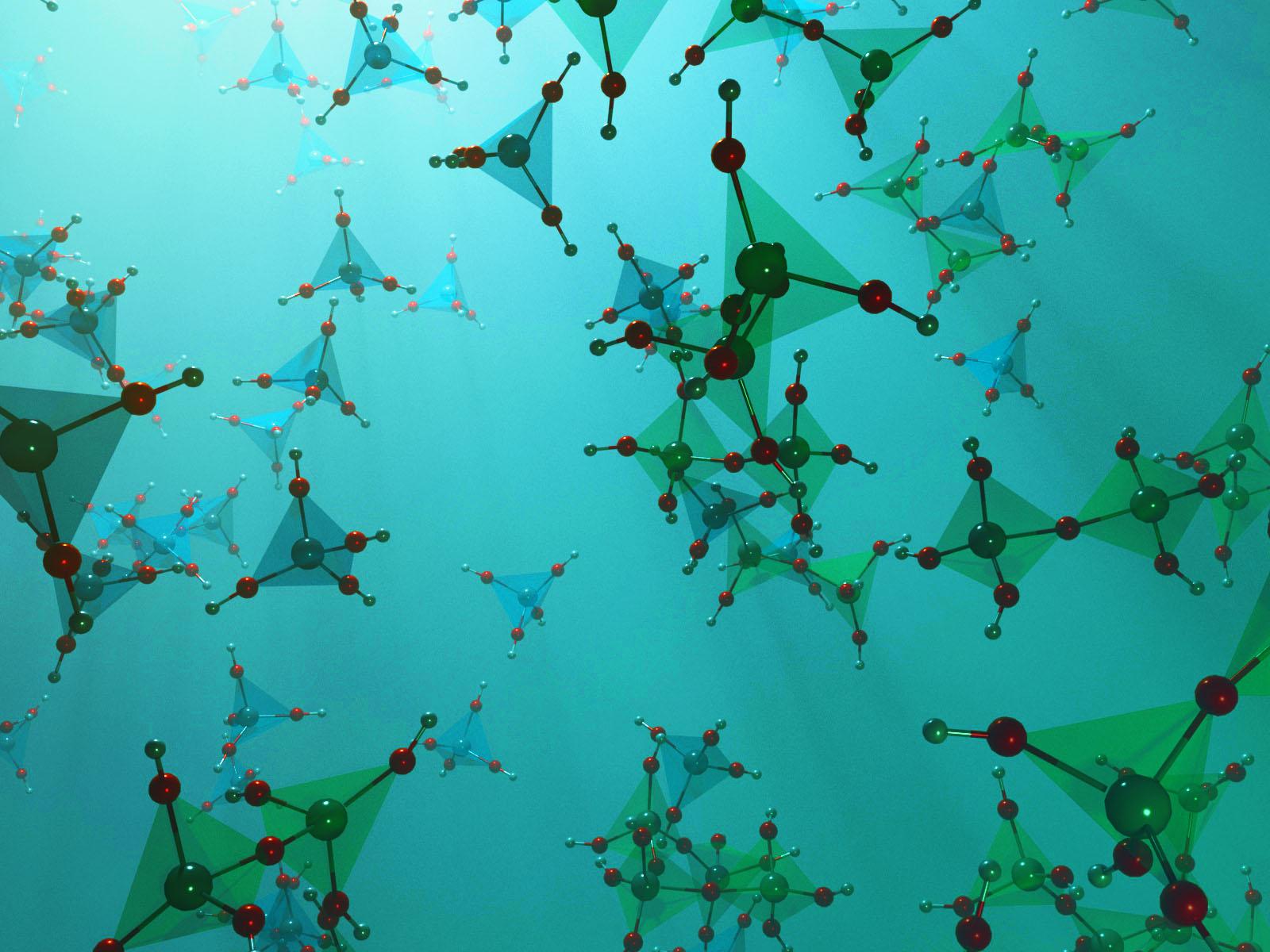Identifying What Controls Reactivity in Concentrated Alkaline Aluminate Solutions
Hydrogen bonding and proton transfer control the identity and reactivity of molecules in highly concentrated alkaline aluminate solutions

The concentration of dissolved ions and water activity correlate with aluminate speciation in highly concentrated solutions.
(Image by Nathan Johnson | Pacific Northwest National Laboratory)
The Science
Dissolved aluminum-based salts, known as aluminates, are an important part of legacy radioactive tank waste, including at the Department of Energy’s Hanford Site. However, the behavior of these salts is difficult to predict in highly concentrated solutions as their reactivity is not known and the mechanism by which solids form, or precipitate, from solution, has not been fully characterized. New research used multiple techniques to identify the type and relative abundance of aluminate ions in highly concentrated solutions. The results showed that hydrogen bonding and proton transfer reactions controlled the final form and potential reactivity of the dissolved aluminate ions. Simulations provide pathways for how hydrogen bonding and proton transfer between different aluminate forms in solution can influence the overall formation of aluminum-containing solids.
The Impact
Aluminum-containing solids are an important component of legacy tank waste. However, how conditions control their formation from concentrated alkaline solutions is difficult to predict. Developing a predictive understanding of the solution conditions and solution species that control aluminum solid formation can lead to safer, easier, and more efficient waste processing through tunable solution conditions.
Summary
In highly concentrated alkaline solutions, aluminate ions are involved in complex processes and have nucleation and precipitation behavior that is challenging to predict. This unpredictability increases the difficulty of managing solutions containing aluminates, which are found in industrial aluminum production byproducts and legacy radioactive tank wastes. This research studied a range of highly concentrated aluminate solutions with different forms of aluminate present to determine the role of the various species and the influence of their local environments on the solution precipitation behavior. The team found that the concentration of other dissolved ions and water activity correlate with aluminate speciation in the solutions. Hydrogen bonding and proton transfer reactions then control the level of polymerization and formation of solids such as gibbsite. Identifying the aluminate speciation in solution has proven difficult due to the rapid timescales and uncertainties in observed structures. This work used a combination of Raman, infrared, and nuclear magnetic resonance spectroscopies coupled with neutron and X-ray analyses to generate a richer picture of the aluminate solution structure under alkaline conditions. Simulation work provided the mechanistic detail to support the proposed reaction routes and the controlling species.
PNNL Contact
Emily Nienhuis, Pacific Northwest National Laboratory, emily.nienhuis@pnnl.gov
Hsiu-Wen Wang, Oak Ridge National Laboratory, wanghswen@gmail.com
Carolyn Pearce, Pacific Northwest National Laboratory, carolyn.pearce@pnnl.gov
Funding
This work was supported by IDREAM (Interfacial Dynamics in Radioactive Environments and Materials), an Energy Frontier Research Center funded by the Department of Energy (DOE), Office of Science, Basic Energy Sciences (BES) program. The research work carried out using the Nanoscale-Ordered Materials Diffractometer (NOMAD) instrument, Spallation Neutron Source at Oak Ridge National Laboratory, was supported by the Scientific User Facilitates Division, BES, DOE. The research at the 11-ID-B beamline, Advanced Photon Source, Argonne National Laboratory was also supported by the Scientific User Facilitates Division, BES, DOE. Raman spectroscopy and NMR spectroscopy were performed using resources at EMSL, the Environmental Molecular Sciences Laboratory a DOE Office of Science user facility sponsored by the Biological and Environmental Research program at Pacific Northwest National Laboratory.
Published: February 28, 2023
Nienhuis, E. T., M. Pouvreau, T. R. Graham, M. P. Prange, K. Page, J. S. Loring, A. G. Stack, A. E. Clark, G. K. Schenter, K. M. Rosso, C. I. Pearce, and H.-W. Wang. 2022. “Structure and Reactivity of Sodium Aluminate Complexes in Alkaline Solutions,” J. Mol. Liq., 367. [DOI: 10.1016/j.molliq.2022.120379]